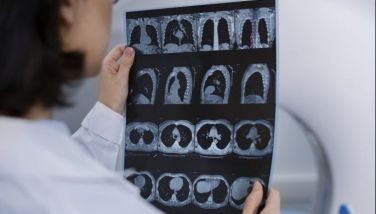Cemetery Art
CEBU, Philippines — Everyone perhaps has the inner urge to know one’s ancestors and the kind of lives they lived. The interest would oftentimes entail visits to cemeteries. And if one is a keen observer, the cemetery is a whole world more than family history.
Cemeteries tell as much about one’s ancestors as the community’s past. Much information can be gleaned from everything one sees around – the mausoleums, the niches, the symbols on tombs, the design of the graves etc. These tell of the deceased person’s economic and social status at the time of death, and even of his or her education and lifestyle while still alive.
But more than history, a visit to the cemetery immerses one in a different world of art. There are various artworks and artistic symbols to engage the eyes and mind. The nostalgic feel of the cemetery on an ordinary day is itself something that affects a casual visitor in a distinct way.
Most symbols seen in the cemetery have textbook meanings. And yet it is quite possible that a particular symbol on a grave was put there simply because someone liked the look of it. It may be upon the request of the deceased or the choice of the mourners left behind.
In deciphering symbols on a grave, it is important to understand the history of the area or of the time of burial. Yes, it can be complicated. Symbols can express ethnic identity, religious affiliation, association membership, or simply the predilection of the time or of the community. A symbol commonly used in one area to mean something specific might mean something completely different in another area or in a different era of time.
And yet it is true that many people who choose grave motifs have no idea that the particular ornamentation they select has meaning.They just like the design and they feel that somehow it is "right."The human being is by nature a creative creature – people may give their own meanings to objects and ideas and, in doing so, create something to convey whatever meaningthey wish it to convey.
The point of view of the person designing the grave cannot be known entirely to others, and therein lies the major problem in attempting to interpret a symbol, character, design, device, figure, motif, or pattern on a tomb. The true representation intended might never be known. But there certain symbols whose meanings just leap out at the beholder:
Angels mean spirituality and they guard the tomb.
Bible hints of the Christian faith of the deceased.
Chalice usually represent the Christian Sacraments.
Crescent means the deceased was probably a Muslim.
Cross is generally an emblem of Catholic Christian faith.
Angel, Flying or Trumpetingsymbolize rebirth or resurrection.
Flame, Light, Lamp or Torchrepresents immortality of the spirit or resurrection.
Garland or Wreath is a symbol of saintliness and glory, also victory in death.
Urn represents immortality. (The storing of the vital organs was of extreme importance to the ancient Egyptians who believed that life would be restored through the vital organs placed in the urn.)
Urn with Flame means undying remembrance.
Dove in both Christian and Jewish cemeteries means innocence or peace.
Lamb usually marks the grave of a child and means innocence.
Laurelis a symbol of worldly accomplishment and heroism.
Palm Branch signifies victory and rejoicing.
Cherubsare angelic and signify innocence.
Harp conveys praise to God.
- Latest




























